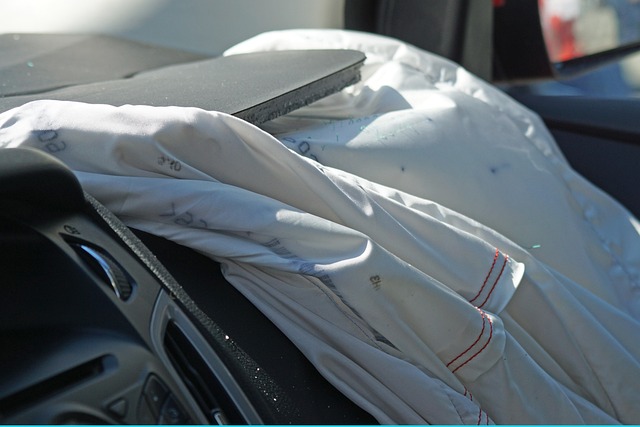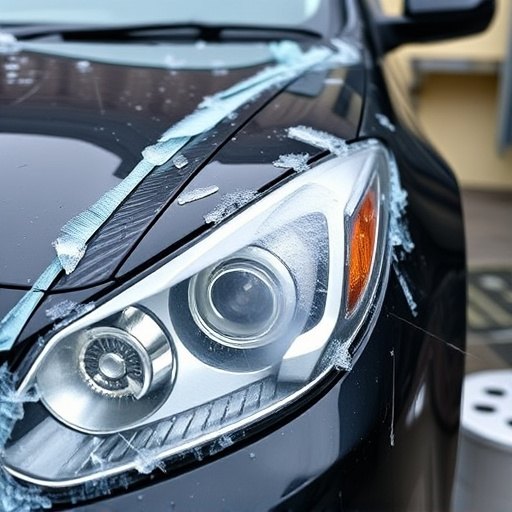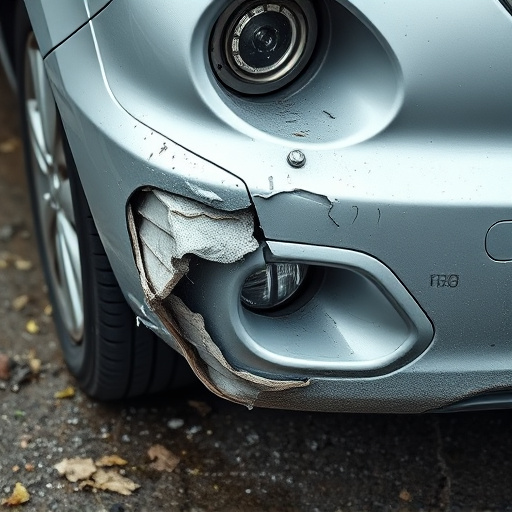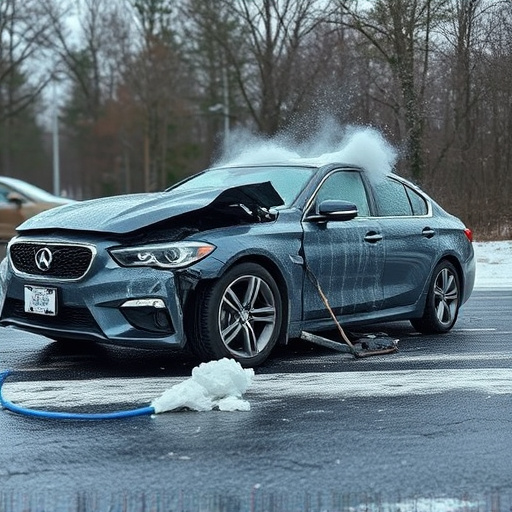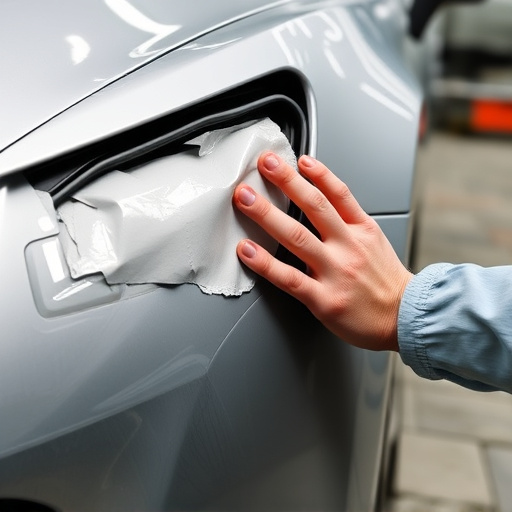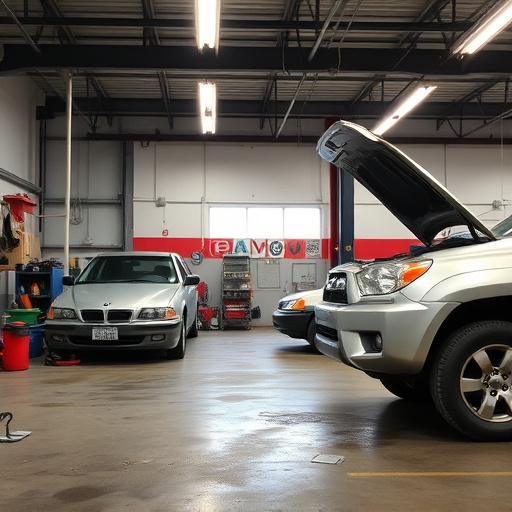Tesla's Battery Protection System (BPS) monitors and protects battery health through continuous voltage, temp, and current checks. Detecting anomalies triggers repair protocols to minimize damage, optimize performance, and extend battery lifespan. Common issues include short circuits, corrosion, and casing compromise, requiring meticulous repair for optimal Tesla battery protection and vehicle longevity.
Uncover the secrets behind Tesla’s innovative battery protection system and master the art of repairing it with our comprehensive guide. In today’s electric vehicle landscape, understanding the intricacies of this technology is vital. We delve into the inner workings of Tesla Battery Protection, exposing common issues that can arise. Armed with this knowledge, we provide a step-by-step repair process, empowering you to navigate challenges effectively. Embrace the future of mobility by mastering the skills to maintain and restore your Tesla’s battery protection.
- Tesla Battery Protection: A Deep Dive into the System
- Common Issues and Failures in Tesla Battery Protection
- Step-by-Step Guide to Repairing Tesla Battery Protection
Tesla Battery Protection: A Deep Dive into the System

Tesla’s Battery Protection System (BPS) is a sophisticated technology designed to safeguard the vehicle’s battery pack against potential damage. This system plays a crucial role in ensuring the longevity and performance of Tesla cars, especially given their heavy reliance on electric power. The BPS continuously monitors various parameters such as voltage, temperature, and current during operation, detecting any anomalies that could indicate a problem.
When issues are identified, the system swiftly initiates repair protocols. This might involve strategies like diverting energy from affected cells, isolating damaged components, or, in more severe cases, performing a frame straightening process (similar to car dent removal for vehicle bodywork) to realign and stabilize the battery structure. The ultimate goal is to minimize the impact of damage, optimize battery performance, and extend the life of Tesla’s high-value energy storage systems.
Common Issues and Failures in Tesla Battery Protection

Tesla battery protection systems are designed to safeguard the vehicle’s lithium-ion batteries from various issues, but like any complex component, they can encounter problems over time. Common issues include short circuits caused by internal damage, such as mechanical impact or manufacturing defects, leading to rapid battery degradation and reduced range. Corrosion on battery terminals and connectors is another frequent issue, often exacerbated by exposure to moisture and extreme temperatures, resulting in poor conductivity and charging efficiency.
External factors like car collisions or vehicle dent repair can also compromise the battery’s protective casing, allowing liquids or debris to infiltrate and potentially causing internal short circuits. In addition, software glitches or outdated firmware might fail to detect and address emerging issues, leading to battery health decline. Understanding these common failures is essential for effective Tesla battery protection repair, ensuring optimal vehicle performance and extending the lifespan of these critical components.
Step-by-Step Guide to Repairing Tesla Battery Protection
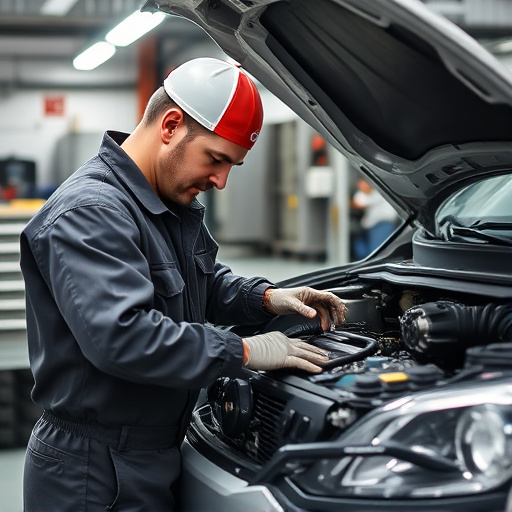
Repairing Tesla battery protection involves a meticulous process designed to ensure optimal performance and longevity for your vehicle’s power source. Here’s a step-by-step guide to help you navigate this specialized task, leveraging techniques akin to those employed in high-quality car repair services.
First, assess the damage meticulously, focusing on both external and internal components. If visible dents or cracks are present, consider using paintless dent repair methods to restore the battery case’s integrity without extensive painting or classic car restoration techniques. Next, isolate the faulty area through diagnostic testing to pinpoint the source of the issue. Once identified, replace any damaged or degraded parts, ensuring compatibility with Tesla’s stringent standards. Throughout the process, adhere strictly to safety protocols, using appropriate personal protective equipment (PPE) and following manufacturer guidelines closely. After part replacement, conduct thorough testing to verify functionality before sealing and finishing the repair, leaving your Tesla battery protection as good as new.
Understanding Tesla battery protection repair is essential for ensuring the longevity of your vehicle’s most critical component. By identifying common issues and following a structured repair process, owners can effectively navigate the journey of battery maintenance. The step-by-step guide outlined in this article serves as a valuable resource, empowering individuals to take control of their electric vehicle’s health. With proper care and knowledge, Tesla battery protection repairs can be efficiently managed, contributing to a smoother and more sustainable driving experience.
